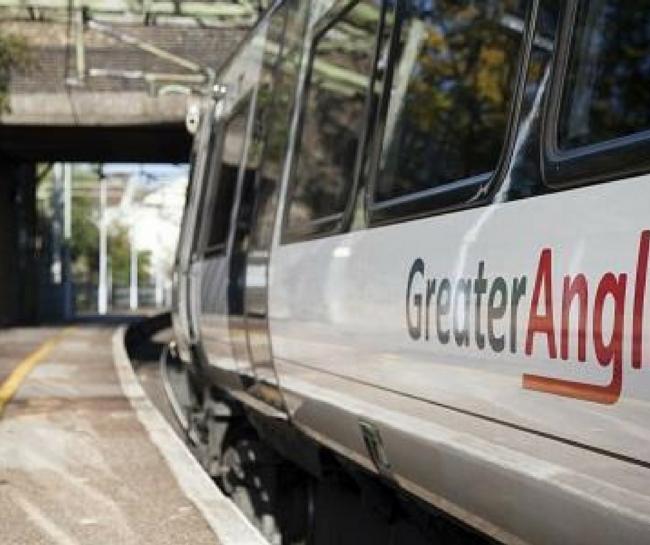Network Rail works with Greater Anglia to keep trains running this autumn
October 11, 2019

Trains designed to blast leaves off the line are just one of a number of measures to keep passengers moving this autumn.
Leaves on the line pose problems for the railway as they stick to damp rails and passing trains compress them into a thin, slippery black layer on the rail which – much like black ice on the roads – can affect braking distance and reduce traction and acceleration.
This means train drivers must slow down earlier for stations and signals to avoid overshooting them. They must also accelerate more gently to avoid wheel spin. All this can increase journey time and lead to delays for passengers.
Following months of careful planning, six leaf busting trains will operate 24/7 to minimise the disruption caused by leaves on the line.
Network Rail has analysed data to identify several problem hotspots across the Anglia route – particularly where trees and vegetation grow close to the line – where the rail head treatment trains (RHTT) will operate.
The specialist trains will travel around 80,000 kilometres between now until 13 December across Norfolk, Suffolk, Cambridgeshire, East London and Essex which is the equivalent travelling around the world twice.
The trains blast leaves off the track using high pressure water jets, then coat the rail with a gel which provides more grip to the train to prevent delays caused by slippery rails.
Leaves also cause track circuits (the system which detects where trains are) and signals to fail, so much planning has been done to remotely monitor key problem areas. We will deploy response teams across the route to carry out daily inspections to remove the build-up of leaves in a number of hotspots.
This year is also the first full year that all Greater Anglia trains are fitted with Wheel Slide Protection’ (WSP) – which is like ABS in cars.
WSP helps the trains’ wheels to brake more evenly, preventing wheel damage and wear that could lead to trains being taken out of service for repair. Last year, thanks to WSP, none of Greater Anglia’s train wheels needed repairs, helping to maintain the reliability of the service.
Mark Budden, Network Rail Anglia’s route director, said: “We have looked at the data to identify where the hotspots are and are fully prepared to deal with leaves that fall onto the tracks, which create a problem similar to black ice on the road.
“We’re working with the train operators to prevent delays to trains. We’re going to be working 24 hours a day, seven days a week to keep passengers moving, so they can get to their destination safely and reliably this autumn.”
Jamie Burles, Greater Anglia’s Managing Director, commented: “We are acutely aware of the frustration and inconvenience felt by our passengers if things go wrong, so we are pleased to be taking action in partnership with Network Rail, making additional preparations to protect train services during what is traditionally a difficult period on the railway.
“We will be doing all we can, as ever, to make lives a little easier for our passengers, getting them from a to b reliably, on time and in comfort.”
Rail passengers using Greater Anglia’s intercity service between Norwich and London are being advised to check before they travel this autumn as some trains will leave earlier than usual until mid-December.
From Monday 7 October until Friday 13 December, Greater Anglia intercity trains leaving Norwich, Diss, Stowmarket, Ipswich, and Manningtree before 7.30am will depart up to five minutes earlier, Monday to Friday only.
The changes, which are made every year, are brought in to ensure that customers still arrive in London on time in the autumn, by allowing train drivers more time to brake and accelerate in the slippery conditions caused by compacted leaves.
Build-up of leaf mulch can also make it harder for our signallers to detect a train’s location, causing delays when subsequent trains are unable to proceed until the train in front moves further up the line.